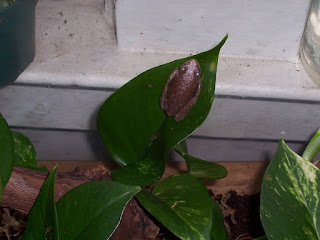
We all remember as little kids the awe we felt at the power of nature, when we first learned that frogs came from fish-like tadpoles. My grandfather recalls not believing it until he was a grown man and actully saw the mtamorphosis with his own eyes over the course of a few months. I've raised many tadpoles in my day. I consider it a right of passage for an kid who claims to be interested in science. Upon raising my first tadpole my mother was so proud that her son had given her "a grandbaby" even if it was a frog. I almost raise at least two every summer and promptly release them where they were caught.
Raising tadpoles is a fun and rewarding experience, that's not just for kids. And since Spring is just around the corner and soon the ponds will be full of these little critters I thought it appropriate to write a little on thier care.
First use clean dechloriated water in thier tank. pond water is good if you can get it regularly, bottled water is fine, and tap water will do as long as you use the dechlorinator drops from the pet shop.
Secondly, please do not crowd them: it is stressful, they'll nibble each othes tails, and it will make clean up to hard. 2 two or 3 tadpoles in a medium sized critter keeper.
Third, keep the water clean. Take out half the water and replace it every other day. Do a full change once every week or week and a half. You dont have to remove the tads when doing a partial change, only on a full change- think aquariums.
Fourth, lets talk food. Most tadpoles you will have will be herbivorous or omnivorous. Some species are carnivorous (ie:Mexican spadefoot toad, or pacman frog), but I doubt you have then in your local pond. Feed your tadpoles frozen thawed spinach (no butter please), algae, algae pellets (like spirulina), fishfood, and you may try prepared tadpole food. Variety is the key to health in all diets.
Lastly, remember that when your tads front and back legs come out (back is always first) lower the water level, stop feeding them, and give them something they can climb onto when they start breathing air (this will occur before the tail is fully gone.
This is simply an overview that does not guarantee success. It is important to research your species. If you do not know the species then following this guide will at least put you on the right track to proper care. (and as far as temperature goes a rule of thumb is: the warmer the water, the faster the tadpole will change but room temperature is fine for most species, as overheating is possible).































